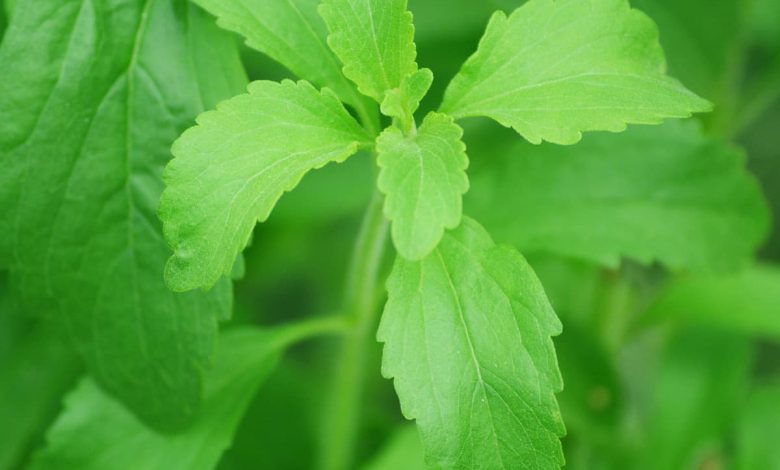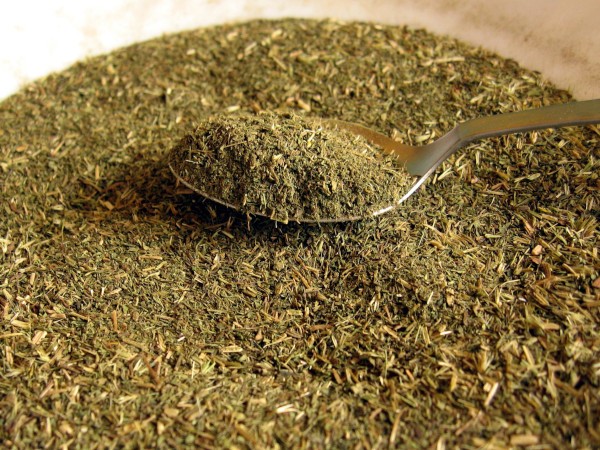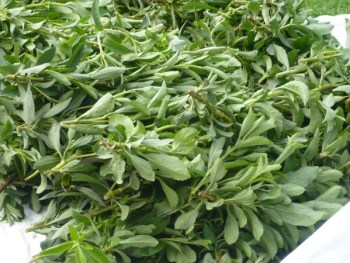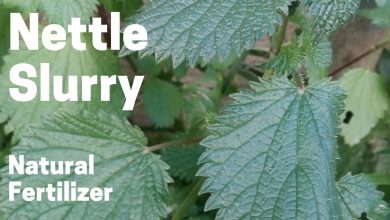Growing Stevia in the Garden step by step: Pruning, Irrigation, Harvest and more

The cultivation of Stevia has some peculiarities compared to other crops in the garden, so today we are going to discuss how to grow it.

What is special about Stevia?
Stevia (Stevia rebudiana Bertoni) is a small herbaceous shrub about 80 cm tall, evergreen, native to Brazil and Paraguay. It is the oldest known natural sweetener, since it has been used to sweeten mate since time immemorial.
The leaves are the sweetest part of the plant and where its properties reside, among which are the contribution of sweetness to food without raising blood glucose levels and without calories, which is why they make it the ideal sweetener for diabetics and People who are following hypocaloric diets.
Climate and soil requirements for stevia
The ideal climate for growing Stevia
Although stevia is native to subtropical zones, it adapts well to temperate and tropical zones. The crop requires a lot of water (1,400-1,800 l/m2 per year) and does not withstand very long droughts, so the most normal thing is that regular irrigation is necessary. It is also a lover of the sun and heat, with temperatures above 13 °C (optimum between 15 °C and 30 °C), although it resists extreme temperatures of up to 43 °C. It can withstand temperatures between 5 °C and 15 °C, although in this case its foliar development would slow down. However, at lower temperatures the plant dies, so in places with cold and frosty winters, it is recommended to grow it indoors, either at home or in a greenhouse.
Type of soil for growing Stevia
The optimal soils for growing Stevia are those with a pH between 5.5 and 7.5 with a sandy loam to clay loam texture. It does not tolerate soils with excess moisture or soils with a high content of organic matter, mainly due to problems of diseases caused by fungi. To solve the problem of high humidity, it can be cultivated on sloping land or drains can be arranged, thus avoiding waterlogging. Saline soils or very acidic soils are not recommended. The plant needs good permeability and drainage, so it is recommended that the soil has good structure and aeration.
How to grow Stevia
planting time
In Spain, it is recommended to plant in March, to be able to harvest at the end of summer, although in colder areas it could be delayed until April or May, when temperatures are somewhat higher.
Pruning
The first pruning consists of training and cleaning, and is carried out between 80 and 90 days after transplanting. This first pruning is very important for the success of subsequent cuts, and it is already considered a harvest.

stevia irrigation
The characteristics of the root, which is distributed close to the surface, must be taken into account. In addition, stevia is a plant that does not tolerate long periods of drought but requires the soil to have an adequate level of moisture to ensure its proper development, without flooding.
In those areas where annual rainfall is scarce, the use of irrigation systems is generally recommended. The water requirement of the crop is 5 l/m2 daily, applied at intervals of 3 days if the soil is sandy and every 5 days if it is slightly clayey. Irrigation should be suspended 15 days before harvest, so as not to affect the sugar content in the leaf.
The most recommended irrigation method is localized irrigation in the orchard, since the water requirements are high and this system allows a very high efficiency in the application of irrigation, and the consequent saving of water.
stevia harvest
Depending on the location of the crop, two, three or more harvests of stevia (also called cuts) are made during the year. All of them should be carried out at a height of 5 cm from the neck of the plant, ensuring that two or three pairs of leaves remain. It is common to do it with scissors, requiring a clean cut without bruises and that the scissors have been disinfected before use to avoid spreading diseases from other plants. The opportune moment of harvest corresponds to the beginning of the formation of flower buds in the plant, since it is at this moment when the plant has the maximum carbohydrate content.

In Spain two or three cuts are made per cycle. In the case of giving three cuts, it must be taken into account that the first cut is the least productive; however, it is decisive for the success of the second and third cut. This first cut is equivalent to a formation pruning that has been explained above. The second cut is the most productive cut. In addition, the content of glycosides in leaves reaches its maximum level. The third cut represents 35% of the harvest. The main harvest (second and third cut) in Spain takes place from spring to autumn.
In addition, the harvest of Stevia, like pruning, must be done during the hours of least radiation, so it is normally done in the morning.
To finish, I would like to thank my dear friend Gustavo Benítez who has contributed enormously to the realization of this article by providing very good information. I hope you liked it and I look forward to your comments!

![Photo of Tree of Love: [Cultivation, Irrigation, Care, Pests and Diseases]](https://www.complete-gardening.com/wp-content/uploads/2022/08/tree-of-love-cultivation-irrigation-care-pests-and-diseases-390x220.jpg)

![Photo of Vegetables: [Concept, Types, Classification and Examples]](https://www.complete-gardening.com/wp-content/uploads/2022/08/vegetables-concept-types-classification-and-examples-390x220.jpg)
![Photo of Elk Horn: [Cultivation, Irrigation, Care, Pests and Diseases]](https://www.complete-gardening.com/wp-content/uploads/2022/08/elk-horn-cultivation-irrigation-care-pests-and-diseases-390x220.jpg)